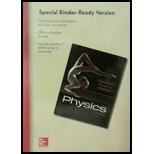
Concept explainers
The reason why the pitch of a bassoon is more sensitive to a change in air temperature than the pitch of a cello.
Answer to Problem 1CQ
The pitch of a bassoon is more sensitive to a change in air temperature than the pitch of a cello since the frequency of standing waves in a wind instrument depends on the speed of sound in air which is significantly dependent on air temperature.
Explanation of Solution
Pitch is the perception of frequency. A high frequency sound corresponds to a high pitch whereas a low frequency sound corresponds to low pitch. Bassoon is a wind instrument.
The wavelength of sound in a cello depends on the body of a cello, but the properties of the body of a cello does not change with the air temperature. The wavelength of the sound inside a bassoon is determined by the length of the tube containing its air column. The tube does not significantly contract or expand thermally with the changes in air temperature.
This implies the wavelength of the sound in both instruments are independent of the variations in air temperature. But with a fixed fundamental wavelength, the frequency of the bassoon’s standing waves depends on the speed of the sound in the air and the speed of the sound in air depends highly on the air temperature. This is why the pitch of a bassoon is more sensitive to a change in air temperature than the pitch of a cello.
Want to see more full solutions like this?
Chapter 12 Solutions
Loose Leaf Version For Physics
 College PhysicsPhysicsISBN:9781305952300Author:Raymond A. Serway, Chris VuillePublisher:Cengage Learning
College PhysicsPhysicsISBN:9781305952300Author:Raymond A. Serway, Chris VuillePublisher:Cengage Learning University Physics (14th Edition)PhysicsISBN:9780133969290Author:Hugh D. Young, Roger A. FreedmanPublisher:PEARSON
University Physics (14th Edition)PhysicsISBN:9780133969290Author:Hugh D. Young, Roger A. FreedmanPublisher:PEARSON Introduction To Quantum MechanicsPhysicsISBN:9781107189638Author:Griffiths, David J., Schroeter, Darrell F.Publisher:Cambridge University Press
Introduction To Quantum MechanicsPhysicsISBN:9781107189638Author:Griffiths, David J., Schroeter, Darrell F.Publisher:Cambridge University Press Physics for Scientists and EngineersPhysicsISBN:9781337553278Author:Raymond A. Serway, John W. JewettPublisher:Cengage Learning
Physics for Scientists and EngineersPhysicsISBN:9781337553278Author:Raymond A. Serway, John W. JewettPublisher:Cengage Learning Lecture- Tutorials for Introductory AstronomyPhysicsISBN:9780321820464Author:Edward E. Prather, Tim P. Slater, Jeff P. Adams, Gina BrissendenPublisher:Addison-Wesley
Lecture- Tutorials for Introductory AstronomyPhysicsISBN:9780321820464Author:Edward E. Prather, Tim P. Slater, Jeff P. Adams, Gina BrissendenPublisher:Addison-Wesley College Physics: A Strategic Approach (4th Editio...PhysicsISBN:9780134609034Author:Randall D. Knight (Professor Emeritus), Brian Jones, Stuart FieldPublisher:PEARSON
College Physics: A Strategic Approach (4th Editio...PhysicsISBN:9780134609034Author:Randall D. Knight (Professor Emeritus), Brian Jones, Stuart FieldPublisher:PEARSON





